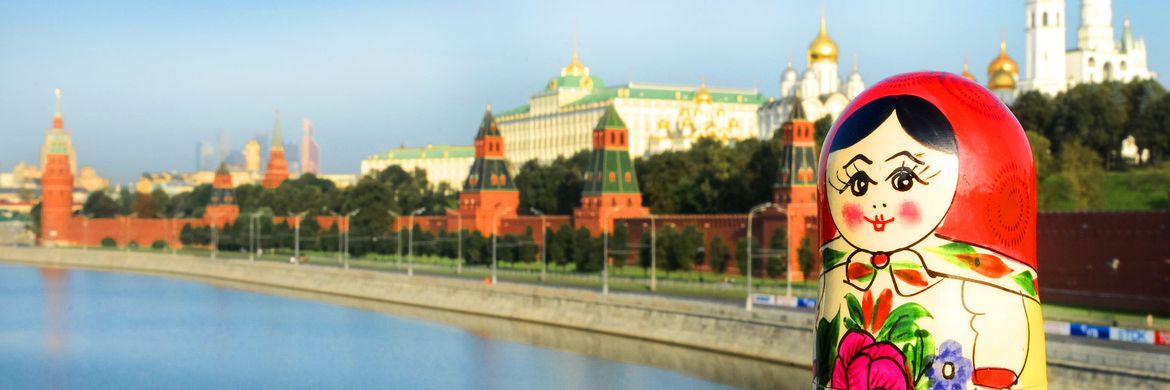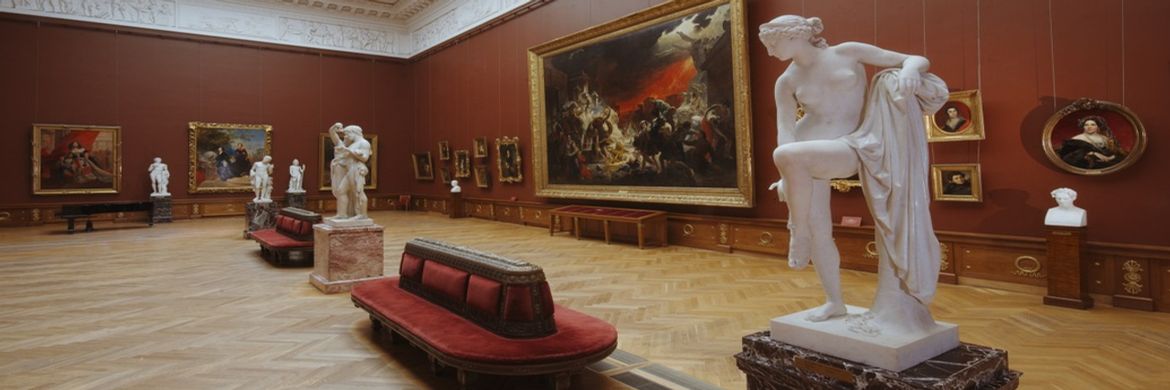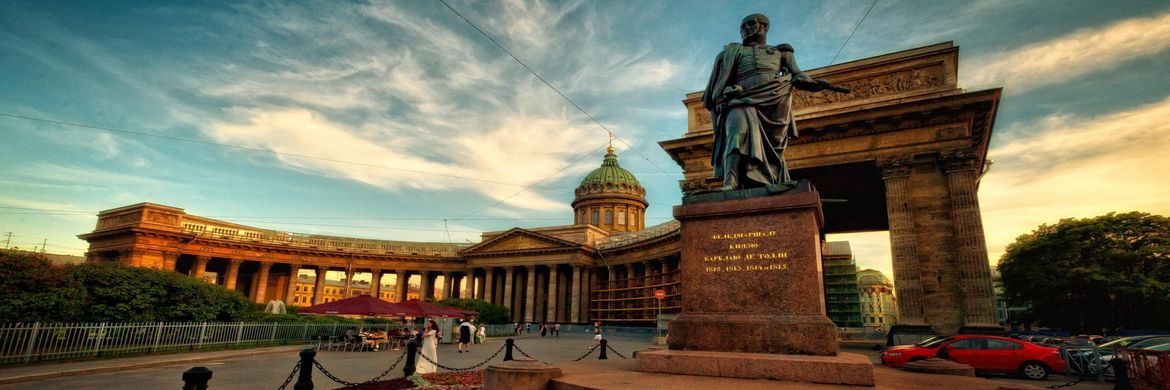Russia Escapes
Russia, the world’s largest nation, borders European and Asian countries as well as the Pacific and Arctic oceans. Its landscape ranges from tundra and forests to subtropical beaches. It’s famous for Moscow’s Bolshoi and St. Petersburg’s Mariinsky ballet companies. St. Petersburg, founded by Russian leader Peter the Great, has the baroque Winter Palace, now housing part of the State Hermitage Museum’s art collection. Russia became an independent country after the dissolution of the Soviet Union in December 1991.
Russia’s area is about 17 million sq.km (6.5 million sq.mi). It covers almost twice the area of the United States of America and remains the largest country in the world. European Russia extends from the North Polar Sea across the Central Russian Uplands to the Black Sea, the Northern Caucasus and the Caspian Sea. The border between European Russia and Siberia (Asia) is formed by the Ural Mountains. Siberia stretches from the West Siberian Plain across the Central Siberian Plateau to the East Siberian mountains between the Lena River and the Pacific coast.
The land boundaries are 19,917 km long. The border countries are: Azerbaijan — 284 km; Belarus — 959 km; China (southeast) — 3,605 km, China (south) — 40 km; Estonia — 294 km; Finland — 1,313 km; Georgia — 723 km; Kazakhstan — 6,846 km; North Korea — 19 km; Latvia — 217 km; Lithuania (Kaliningrad Oblast) — 227 km; Mongolia — 3,441 km; Norway — 167 km; Poland (Kaliningard Oblast) — 206 km; Ukraina — 1,576 km.
Russia has a wide natural resource base including major deposits of oil, natural gas, coal, and many strategic minerals, timber. The country’s terrain varies from broad plain with low hills west of Urals, vast coniferous forest and tundra in Siberia, uplands and mountains along southern border regions.
Ranges from steppes in the south through humid continental in much of European Russia; subarctic in Siberia to tundra climate in the polar north. Winters vary from cool along the Black Sea coast to frigid in Siberia. Summers vary from warm in the steppes to cool along Arctic coast.
MOSCOW
A great city, the capital of Russia, Moscow was founded in 1147 by Prince Yuri Dolgoruky. It grew from a small town on the banks of the calm Moskva River into a giant city with a population of more than 9 million people and a territory of more than 900 square km. The heart of the city is the Kremlin. It is the symbol of Russia, the place from where Moscow began to grow. It is flanked by the Red Square, that is crowned by the gorgeous St. Basil’s Cathedral. On the streets of Moscow the new meets the old: ancient churches are situated close to the awkward bulks of the «Stalin Gothic»; elegant mansions, built in «modern» style, are the neighbors of the Soviet skyscrapers on the New Arbat; and next to the Kremlin is the noisy and crowded main thoroughfare — the Tverskaya Street with neon advertisements of famous foreign companies and firms, private stores and restaurants.
PETERSBURG
It is one of the greatest and most beautiful cities in the world, the historical and cultural importance of which is as big as that of Paris, London or Rome. St. Petersburg is the northern capital of Russia. It is the city of white nights, grandiose palaces, impressive cathedrals, wide streets, shady parks, numerous rivers and canals, the city of traditional hospitality and benevolence, the city with the open heart. St. Petersburg is often referred to as the Northern Palmyra or Venice of the North, the symphony in stone. In St. Petersburg there is a lot to be enjoyed. Here you can enjoy a visit to the world famous Mariinsky Opera and Ballet House, one of the richest collections of the world art — the State Hermitage Museum, Peter and Paul Fortress — the burial place of the Romanov Dynasty; St. Isaak’s Cathedral — a Russian Orthodox cathedral, the fourth largest in the world; the Museum of Ethnography, containing the world famous “Silver Room”; and magnificent Royal summer residences — Peterhoff (Petrodvorets) — the summer home of Peter the Great, located on the shore of the Gulf of Finland; Town of Pushkin — the former Tsars’ Village, residence of Catherine the Great; Pavlovsk — the former summer palace of Paul.
IRKUTSK
Founded in 1661 when the Russian military cossack troops established a fortress on the right bank of the Angara River. From late 17th century, it was a political, economical and cultural center of Siberia. The city’s Russian classical architecture dates back to the period of the 1880s when the city boomed after gold was discovered in the area. Most of the brick mansions and grand public buildings varying in architectural styles were constructed in the late 19th — early 20th century. The beautiful Russian Orthodox churches and a Polish Cathedral (the only Siberian Gothic-style building) are located in downtown.
NOVOSIBIRSK
Novosibirsk was founded in 1893 on the place of railway bridge construction over the river Ob. At first the village had name Novyi, then Alexander village in honor to St. Alexander Nevskiy heavenly patron of emperor Alexander III. From 1895 it was renamed in Novo-Nikolaev village in honor to St Nikolay Wonderworker heavenly patron of emperor Nikolay II. In 1903 the village got status of city and in 1925 Novo-Nikolaevsk was renamed in Novosibirsk. There are two events that played an important role in transformation it into megapolis in the history of town. The first is construction of Trans-Siberian Railway and bridge over Ob river. The second fundamental event was transportation of great number of industrial enterprises during II World War in Novosibirsk. From 2000 Novosibirsk is the centre of Siberian federal district.
SUZDAL
Suzdal is situated 30 km from Vladimir. The name of Suzdal appeared in the annals for the first time in 1024, but excavations have shown that the first settlement was here in the 10th century. The first stone church was built here in the 12th century. Suzdal is a town museum of the 13th–19th centuries, containing 33 churches, 5 monasteries, 7 chapels and… no any modern constructions in the center of the town. Among the numerous places of interest in the town is the Monastery of Lament of Christ (Spaso-Efimievsky Monastery), dating back to the 16th century. Its Holy Gate is one of the finest treasures of the 17th century Suzdal architecture; its walls with 12 mighty towers and the length over 1 kilometer give it the air of a fortress.
VLADIMIR
Vladimir founded in 1108 on the banks of the Klyazma River, a small tributary of the Volga, is a pearl of ancient Russian culture. Vladimir was the capital of Russia in the 12th century and played a key role in the formation of the Russian state. The ceremonial gate of the city is the Golden Gate (1164), which at the same time was used as its important fortifications. Another striking monument of the town is the Assumption Cathedral (built in 1158–61 and enlarged in 1185–89), here one can find much gilt, fine majolica tiles, and some remnants of the old murals and frescos (1189) which were restored in 1408 by Andrei Rublev and Daniel Cherny.
SAMARA
Samara is one of the oldest cities on the river Volga. It was founded in 1586. There are many legends and stories about this region. The history of Samara begins with a legend. Whole districts of old houses with corner turrets and steeples, decorates with wooden fretwork, are preserved in this city. In historical centre of the city one can find examples of different architecture styles: Russian style — the drama theatre; modern style — house of Kurlina; Moresque — one of the biggest Synagogues in Europe, pseudo gothic — roman-catholic church. Samara became twice the capital of Russia during the Second World War and till now you can visit the deepest underground Bunker of Stalin, which has no analog in the world. Samara museums possess rich collections of unique art works. Also here In Zhiguli Mountains in ice period survived many kinds of animals and plants, which are now seen only in Zhiguli and nowhere else in the world.
- Spy Game – Spy Game is a completely new experience for you and your friends. You will have a unique opportunity to visit and to explore Russian cities full of mystery and enigmas. You will be drawn into the great story of kidnapping, pursuit, imprisonment, Russian Troikas, Imperial Palaces, Ghosts, hidden treasures and others…
- One day in Military Style – This unique One day in Russian Army program include theoretical trainings; practical trainings (including shooting from military weaponry); lunch at tactical field kitchen; and passing “exams” and gaining the “certificate” of Russian Army Soldier.
- Imperial Reception –We offer you a unique chance to feel yourself Russian Tsar or Tsarina. You will be met by waiters dressed up in the 19th century costumes and led to the chosen dining-room decorated with candles and flowers especially for you. The elaborate dinner will be served in the way it used to be served during the reign of the Russian Emperors and accompanied by the “court” orchestra or ballet performance. This Imperial Russian Ball will be an unforgettable experience in your life.
- Russian Party – If you come to Russia you should not miss the chance to enjoy the traditional “The Russian Party”. Feel the unique Russian holiday spirit with luxurious “Troika” rides – the symbol of all Russian festivities. And the company of the Gipsy band singing and dancing only for you will create the atmosphere of the noble celebration.
- 100 Years of Revolution – The unique program includes Orientation city ride with entrance to significant places associated with revolutionary movements in Russia: Cruiser “Aurora”, Prison of Peter&Paul Fortress and Museum of Political History. Cruiser Aurora – Travel back in time by stepping on board the memorial ship Aurora, which played an important role in the Bolshevik Revolution of 1917.
- Master Classes – Are you interested in Russian Applied Art? You have a chance to make a Matrioshka Doll by your own hands. If you are fond of Russian Ballet in Russia you have a great opportunity to participate in Master Class in the famous Vaganov School or others. As a painter you can visit a master class in one of the Russian Art Schools.
- Reading Lovers – Unique Russian Literature, offering you extraordinary experiences. Visit Tolstoy’s family house departing from Moscow to Tula the way that people at Tolstoy’s time did – on a historical steam engine, taking some traditional tea & caviar pancakes.
- Art & Architecture lover – The most beautiful World Heritage museums in Moscow & Saint Petersburg. We’ll invite you for a private concert inside the Royal Palace and will provide you a glass of champagne during your after working hours personal visit to the Hermitage.
- History Lovers – we can arrange a historian to guide you by the museums, historical streets and even private heritage houses according to the route of your interests. Prefer foodie travel style? Just let us know your preference – we’ll make an appointment with famous Russian chefs and we’ll teach you to cook famous Russian dishes.
- Behind the scenes – Take your kids behind the scenes of the world famous Russian circus and after enjoy the show in the very first row! Visit the backstage of the Bolshoy Theatre and take a selfie on the world’s famous Historical Stage, guided by one of the famous ballerinas.
- Russian Vodka & Caviar – Visit to the famous Russian Bath-House “SandunoFF” – Russian sauna. “A mug of beer and “heart-to-heart-talk” in combination with magnificent ancient-looking interiors, rococo moldings, halls decorated with ebony and the best in the whole world sweating-rooms makes the Sanduny bath the only one in its kind”
- Wonders of Karelia – Karelia is a region in the Russian Northwest. Its capital, the city of Petrozavodsk, is located nearly 400 km away from St. Petersburg and 300 km from the Russian-Finnish border. Among numerous cultural sights of the area Kizhi Island is the most famous. The unique ensemble of wooden churches, chapels and traditional houses is situated there. The region has vast areas covered with forests, tens thousand rivers and lakes, two National Parks and several Nature Reserves.
- Skiing Adventure in Karelia – Experience the Skiing (12 km) to the tourist center “Kurmoila and to the village Rubcheila. Rest with hot tea and sandwiches during the skiing. Stay in an old Karelian house including Dinner with Karelian national dishes.




